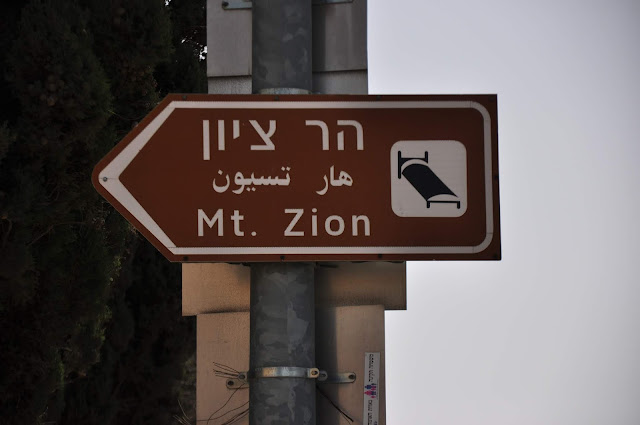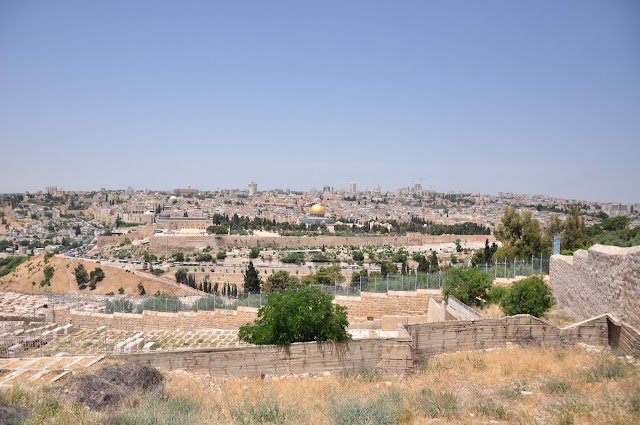 |
| Sun Burst in the Clouds over the Mediterranean Sea |
 |
| Sun Setting behind the Clouds over the Mediterranean Sea |
 |
| Ascending Rainbow behind the Cloud |
The
Book of Daniel contains stories, dreams, visions, interpretations, and
prophecies centered on the Hebrew prophet named Daniel and his friends. The work is considered apocalyptic literature
that is highly symbolic. The narrative
of the book is set within Babylon during the 6th century B.C.E. However, many of the events described in the
visions refer to the state of affairs and incidents in the 2nd
century B.C.E. Thus, the book has been
dated to the 6th century, 2nd century, or as a kind of
hybrid from both centuries. The story’s
narrative takes place following the United Kingdom of Israel under King David,
and the subsequent division and exiles of the tribes of Israel. In this context, the narrative describes the
rise of four kingdoms (chaps. 2 and 7).
Although the God of heaven has given the kingdom to the gentile rulers, things begin as a kind of
golden age and then gradually decline until they are annihilated when struck by
a stone cut from a mountain without human hands, and in those days God of
heaven sets up a kingdom that will stand forever (chap. 2). Daniel later records a dream of visions in
his head that describe four beasts coming out of the sea (chap. 7). He finally sees in his visions,
I saw one like a Son of Man (כְּבַ֥ר אֱנָ֖שׁ)[1]
coming with the clouds of heaven.
And he
came to the Ancient One
and was
presented (קרב) before him.
To
him was given dominion
and
glory and kingship,
that
all peoples, nations, and languages
The
meaning and interpretation of the “Son of Man” is problematic. It is based on the Hebrew phrase כְּבַ֥ר אֱנָ֖שׁ,
“one like a ‘Son of Man’” that is sometimes simply translated as one like a
“human” or “human being.”[3] The identity of the “Son of Man” has been
discussed since ancient times. There
have been three basic interpretations: 1) an early Jewish interpretation saw
the “Son of Man” as an individual figure who is the anointed or chosen one—that
is, the Messiah; an early Christian interpretation saw this as a reference to
Christ and to his second coming; 2) a collective symbol that represents the
entire Jewish people; and 3) an individual that represents not the Messiah, but
rather a heavenly angelic being.[4]
Perhaps
a helpful way to understand the “Son of Man” in relation
to the four beasts in Daniel is to compare them with the creation account in
Genesis where God is gradually creating space, order, vegetation, sea monsters,
living creatures, and finally אָדָם, man (humankind) in his
own image; God then rested on the seventh day after “the heavens and the earth
were finished,” with all their hosts, וְכָל־צְבָאָֽם; and God blessed it and hallowed it (Gen
2:1).[5]
In
Daniel, the four beasts are described as four kings that shall arise out of the
earth (Dan 7:17). The first beast was
like a lion, the second a bear, third like a leopard, and the fourth was
terrifying and frightful (vv. 4-8). The
fourth beast is interpreted as a fourth kingdom that will arise from the earth,
different from all other kingdoms, and shall devour all the earth (v. 23). These kingdoms have been interpreted at least
in two ways. The first view understands
the kingdoms as the empires of Babylon, then the Medo-Persian, then the
Greco-Seleucid, and finally the Roman Empire.[6] The second view argues that the kingdoms are
the empires of Babylon, the Medes, the Persians, and finally the Greeks.[7]
Regardless
of which view one favors, both agree that
the first beast refers to Babylon. Thus,
the following should accommodate both interpretations. The religious backgrounds of Daniel are
clearly behind the narrative. King
Nebuchadnezzar of Babylon brings an end to the kingdom of Judah and brings back
some of the vessels from the temple of Jerusalem (Dan 1:1-2). The king is told that the God of heaven has
given him the kingdom (2:36-38), after which the king worships Daniel and
confesses the God of Daniel (2:46-47).
However, eventually Nebuchadnezzar
will set up a golden image of himself and then order all “peoples, nations, and
languages” to worship his image (3:1-7).
All comply except Shadrach, Meshach, and Abednego, whom the king
punishes by casting them into a furnace of blazing fire (vv. 8-23). Fortunately, they are vindicated with the
presence of a mysterious figure who was likened to “a son of [the] gods,” לְבַר־אֱלָהִֽין (vv. 24-30; esp. v. 25). Unfortunately for Nebuchadnezzar, he is
humbled for his error of judgment; he is driven away from society and wanders about
like an animal until he acknowledges the sovereignty of the Most High (4:1-33). After this is over, Nebuchadnezzar lifts his
eyes to heaven and his knowledge returns
to him, and he blesses and praises the King of heaven (vv. 34-37).
Things
will quickly change with King Belshazzar who celebrated a great feast in which
he took vessels of gold and silver, which had been taken from the Jerusalem
temple by Nebuchadnezzar; Belshazzar uses them to drink wine and praise the
gods of gold, silver, bronze, timber, and stone (5:1-4). However, the writing was on the wall. Like Nebuchadnezzar, he is rebuked and
eventually the kingdom will be taken from him (vv. 5-30).
During
the rule of King Darius, the king’s administrators and satraps attempt and
succeed in having Daniel accused, arrested and then thrown into a lion’s den because three times a day Daniel
would face Jerusalem to pray, praise, and seek mercy before God (6:1-11). Although he is thrown into the lion’s den (vv. 16-18), Daniel is rescued
through an angel, after which King Darius is relieved with gladness, has Daniel
removed and his accusers thrown into the lion’s den, and then encourages all
peoples and nations of every language to honor the God of Daniel (vv. 19-28).
These
events help set the stage for what follows in chapter 7 where Daniel receives
visions of the four beasts, the Ancient of Days, judgment, the arrogant horn,
the death of the fourth beast, and the
Son of Man.[8] The four beasts represent four kings (or
kingdoms) that will arise from the earth in a kind of sequence as the dominant world power one after another (v. 17),
after which the holy ones will receive the kingdom forever (v. 18). There is a slight variation later in the
chapter that states, “the greatness of the kingdoms under the whole heaven shall
be given to the people of the holy ones of the Most
High” (v. 27).
How
does the Son of Man fit into the sequence of kingdoms? The answer appears earlier in the same
chapter in verses 13-14 where the vision describes the Son of Man who ascended
to the Ancient of Days and was presented before him, and to him was given the kingship
so that all peoples, nations, tongues, and tribes might serve him. Although the four prior kingdoms arise from
the earth, the one like the Son of Man ascends to the Ancient of Days.
It
should be noted that the saying, the “Son of Man was presented (קרב)
before the Ancient of Days” (Dan 7:13), has another interpretation. The Hebrew word קרב
translated as “presented,” can also mean to offer sacrifice.[9] Margaret Baker goes as far to say that it is “the technical term for
making a temple offering, and so the Man was ‘offered’ to the Ancient of Days.”[10] Questions
arise such as who did the
offering? Did the Son of Man offer
himself? Was it someone else who made the offering? This becomes more complicated when we realize
that the interpretation of the Son of Man reveals that he also represents the
people of God (vv. 18, 27). Is it the
people of God who are making the offering?
Or is it the Son of Man who is offering up the people of God?
Also,
is it possible that the ascension of the Son of Man also represents the lifting
up of the people? It may well be the
case. We saw above that before Elijah
was taken into heaven, he offered up an acceptable sacrifice that represented
the twelve tribes of Israel. We also saw
above that when David ascended up to Mount Zion with the Ark of the Covenant, he was accompanied by all of Israel.
There
are several passages in the New Testament that echo this parallel between the
Son of Man and the people. One of the
most notable examples is found in John’s Gospel where Jesus is identified with
the Son of Man (chap. 12). In
particular, Jesus says, “when I am lifted up from the earth…I will draw all
people to myself” (Jn 12:32).[11] According to First Peter, Christ suffered for
sins once and for all in order to bring the people to God (1 Pet 3:18). Through the mercy of God, the people have
been raised up with Christ and seated with him in the heavens (Eph 2:4-6). It is the mystery of God’s will to gather up
all things in him, both things in heaven and things on earth (1:10). Finally, those who share in the “flesh” and
“blood” of the Son of Man (Jn 6:53-56), also share in the ascending Son of Man
(vv. 62-63). In chapter 17, Jesus prays
that those who believe in him might all be one as the Father and Son are one
(v. 21), and that they might be with him
(v. 24).
This
last section was rather long, but its summary will be brief. The book of Daniel describes the rise of four
kingdoms (chaps. 2 and 7). Daniel
understands that the God of heaven has given the kingdom to the gentile rulers.
Although things begin as a kind of golden age, they gradually decline
until they are annihilated when struck by a stone cut from a mountain without human
hands; in those days the God of heaven sets up a kingdom that will stand
forever (chap. 2). Daniel later records
a dream of visions in his head that describe four beasts coming out of the sea
(chap. 7). These beasts represent the
four kingdoms in chapter 2. The fourth
beast, representing the fourth kingdom, represents all that is hostile toward
God, God’s people, and God’s covenant.
In the end, the beast is
destroyed. Daniel also sees one like a
Son of Man ascending over death and destruction up to the Ancient of Days. This ascension dimension is not a mere burnt
offering; rather it is human, personal, and communal. All of the people of God will be a living
sacrifice presented and acceptable to God.
[1] I capitalized Son of Man for emphasis.
LFL.
[2] The
Holy Bible: New Revised Standard Version (Nashville: Thomas Nelson
Publishers, 1989), Da 7:13–14. Ed. LFL.
[3] The NRSV has “human being,” the NASB
“Son of Man,” the ESV and NIV have “son of man.” LFL.
[4] John Joseph Collins and Adela Yarbro
Collins, Daniel: A Commentary on the Book of Daniel (ed. Frank Moore Cross; Hermeneia—a
Critical and Historical Commentary on the Bible; Minneapolis, MN: Fortress
Press, 1993), 306-310.
[5] See Neh 9:6; Ps 33:6; Isa 45:12; 40:26;
34:2.
[6] For example, John Phillips, Exploring the Book of Daniel (Grand
Rapids: Kregel, 2004), 116. *
[7] See NJBC, 411; Samuel Rolles Driver, The Book of Daniel: with Introduction and
Notes (London: C. J. Clay and Sons, 1900), 94-95.* For arguments in
favor of this view, see Robert J. M. Gurney, “The Four Kingdoms of Daniel 2 and
7,” Themelios: Volume 2, No. 2, 1977
(1977): 39.*
[8] The text uses the term חזה (vision) eight times, once as a noun
(7:1), and seven times as a peal participle (vv. 2, 4, 6, 7, 9, 11 (2x), 13).
[11] Some ancient versions have “all
things.”













